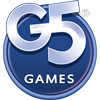Josiah Davis was nearly 15 years old going into his first pitch meeting with a potential investor. He and his father, Brian, sat in an upscale Bay Area hotel preparing to deliver a pitch for PaperChase, the paper airplane-flying game they’d been designing over the past months and years.
“It was the longest wait,” Josiah recalls.
“It wasn’t like he was late,” Brian adds. “It was just so stressful, waiting for him to turn the corner, and we’re sitting there all dressed up in this really nice hotel.”
The father-son duo had a prototype based on Josiah’s concept and sketches. Neither of them had any prior experience in game development. Brian, a Sacramento freelance programmer and former senior software engineer at Pandora, had plenty of experience in app development, but not in games. Josiah was just entering high school, and he was taking lead on the pitch.
“He didn’t really want to do it,” Brian says, “But I was like ‘You’re going to do this.’”
But Brian’s trust in his son paid off, and the two walked away from that meeting with the funding they needed to start 3D modeling for Paper Chase.
“Putting a kid in a position that you’d put a developer in, you always risk not knowing if he’s going to be able to step up to the plate for it,” Brian says. “And I think that Josiah has really stepped up to the plate in a lot of ways.”

Getting It Down On Paper
PaperChase started in front of a Jamba Juice less than a couple of years before Josiah’s pitch meeting. Brian challenged Josiah and his older brother, Caleb, to come up with 10 game ideas. One of those ideas was about flying paper airplanes through a classroom. The idea developed into a game concept where players guide a paper airplane as it glides down the streets of New York.
The idea didn’t die there. Josiah kept PaperChase alive by sketching out planes and design concepts. “I just gave my dad those drawings, and we kind of just let it go for a little bit,” he says. “I don’t know when the prototype was made, but he came to me one day and he was like, ‘Hey, look at this.’”
Josiah was thrilled to see his sketches take life in the prototype, and they began planning their next steps.

Taking Off
They designed the game around a free-to-play model, letting gamers extend playing time with in-app currency. They showed the prototype to investors, secured funds and a few months later the game debuted as PaperChase 2 on iOS and Android. It was a more stripped-down version of the game they’d been planning, but their investor wanted to get it out the door and see who, if anyone, would pick it up.
“At the time, we didn’t have any players, we didn’t have anything at all. We were just kind of putting it out there, starting from absolutely nothing,” Brian says. “So we polished it as much as we could, and we put it out there, and I was pretty much prepared to tell Josiah, ‘OK, well, we did the best we could.’”
For a while, things seemed quiet. They didn’t have a marketing budget, but Josiah showed the app to classmates to spread the word, and Brian promoted the release the best he could through his own contacts. But then, without warning and without connection to their word-of-mouth campaign, the trickle of downloads turned into a flood.
“We got like 4,000 downloads in one day, and we had no idea where it came from,” Brian says. “And the next day, it was like 10,000. And the next day, it was like 40,000. And then (it grew) just exponentially bigger, every single day. And it kept on going.”
PaperChase 2 has reached more than 1.4 million downloads. Most of their installs are on Android devices in Russia, the Philippines and other countries far from their home in California. They’re still not sure what started the avalanche.
“Once I found out where most of the downloads were coming from, I was really surprised,” Josiah says. “I didn’t have any explanation, like, in Russia, having it blow up like that — that was pretty crazy.”
Next Version
In the time since PaperChase 2’s release, the Davis family has been planning to make the game they originally set out to make — one with a deeper storyline and more ways to play. They’re hoping to leverage the success of their game with a Kickstarter campaign to help fund the expanded app.
They’ve made a lot of progress on PaperChase Version 3 so far, building the story mode around a route mirroring real streets in New York City. “We literally just looked at Google Maps and pictures of New York City and recreated it from scratch,” Brian says. “You can’t just go buy a map of New York. I mean, you could, but it would just be so heavy to put in a game that it would never be able to ship.”
Brian, who is from New York originally, says the city still holds an important place in his heart. “We spent a lot of time getting it right,” he says. A big reason for the Kickstarter campaign was to help add some of New York’s landmark buildings and sculptures — models that take long work and attention to detail.
Flight School
While designing PaperChase, Brian and Josiah took every opportunity to overcome their lack of experience.
“Me and Josiah, we basically took ourselves to Game Strategy University,” Brian says. “I probably bought like $400 worth of books. We went to several conferences, we talked to people.”
PaperChase owes much of its success to Brian’s friend and mentor Mark Otero, general manager of Capital Games (formerly Bioware Sacramento). Otero himself took a circuitous route to wild success in the games industry, going from financial analyst to yogurt shop owner to social games entrepreneur before his company, KlickNation, was acquired by EA in 2011.
“Mark definitely gave me the best piece of advice, and he said, ‘The best thing to do, if you don’t remember anything else, just make them pay to keep having fun,’” Brian says. “That sounds mean, in a way, but it assumes that they’re having fun in the first place. That’s the challenging part, is to make it fun. And then, when they’re having fun, you know, people don’t mind paying a little bit to have fun. They do it all the time.”


For his part, Josiah says he’s learned the value of patience. Most apps aren’t created overnight, and the few years that it took PaperChase to get off the ground would seem like a long time to any teen, but Josiah has developed something of a pragmatic mindset when it comes to the project.
He saw PaperChase through to the launch of a successful indie app, but he says he’s also learned about the way creative projects get off to a good start.
“I understand that when creating a game or something like that, it does not start on a computer,” Josiah says. “It doesn’t start with a large company. It starts with a pencil on paper. It begins inside your head.”

Another lesson came from how much toil it really takes to cultivate a creative seed into a full-grown product. “And the most important part, the key to success when making a game or invention or anything is how well can you get what’s inside your head into the physical world,” he says. “Because no one can really climb inside your head and see what you’re seeing. It might look so beautiful to you, but it all depends on how well you’re able to make that a reality.”
Family Business
Brian says game design has created a new sort of bond among Caleb, Josiah and himself. They’ve brainstormed together, argued over features and attended conferences together. Brian compares their idea sessions to a game of Jenga, where each person takes turns adding (or sometimes removing) pieces. When the three are talking about the game and come to an impasse, it’s not always up to Dad — they often take a vote and go with the majority.
But sometimes, Brian says, he will take on a more authoritarian role. “Even though it is frustrating because we’ve had some intense debates over things, and then I’ve sometimes played the Dad Card in those situations, because I’m like, ‘OK, listen, there’s some real money on the table here’ … It’s good to see that our relationship is able to bounce back from that.”
And he trusts his relationship with Josiah enough that he’s not worried about the inevitable disagreements that come from working together. “You know we don’t have an intense thing and then be mad at each other for three months or something. Usually, it takes like a day at the very most.”
At its root, the occasional tension between Brian and Josiah seems to come from a father’s desire to challenge his son. “I try to guide and direct, but I always try to put him out there, even though he’s not ready for it,” Brian says. He realizes it’s risky to put a teen in a developer’s role, but it’s clear that Brian is proud of his sons.
“I don’t think there are many other young black teens in the country who can say that they pitched an investor and they got their first investment check at 15 years old, 14 years old. It’s definitely a very unique experience that Josiah’s going to have for the rest of his life.”
Comments










